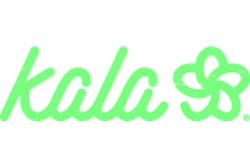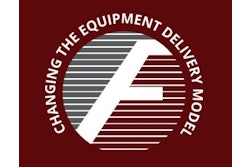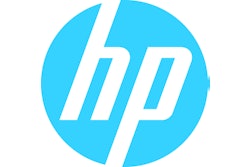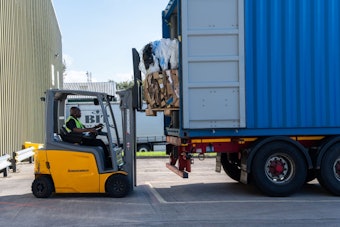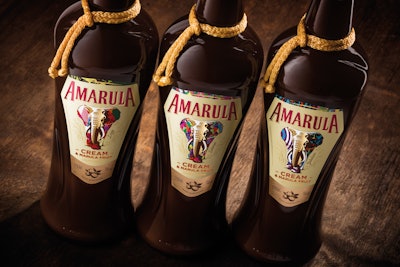
At its day-long event in Orem, UT, label and flexible packaging printer Kala Packaging, formerly Flexible Technologies, treated nearly 100 brand owners, packaging designers, and co-packers/co-manufacturers to presentations and a panel discussion that dug deep into consumer trends and the challenges CPGs face in meeting today’s extremely diverse, fast-paced, and competitive market. The event, “Igniting Brands with a Spark,” coincided with the company’s recent rebranding. Kala, in Hawaiian, means to loosen, untie, free, release, unburden, or remove barriers. According to Maui Chai, Founder and President of Kala, who hails from Hawaii, the new name articulates the company’s goal of helping its customers unlock the marketing capabilities of packaging.
Founded in 2002, Kala was one the first label and packaging printers to install an Indigo digital press in North America; today it maintains one of the most extensive HP Indigo platforms in the world. At the event, Deborah Ginsburg, Founder and CEO of Strategia Design, set the stage for a discussion on the capabilities of digital printing by presenting to attendees trends around current demographics, package design, and the user experience.
“You can’t start talking about branding and marketing without having an understanding of what’s happening in the world,” Ginsburg advised. The first trend she touched on is the evolution from a single consumer type to multiple consumer sets.
Said Ginsburg, “We used to have the 18- to 65-year old shopper we could market to. We knew her, she was great, she was easy to market to, we could define her. But today we can’t. We have groups of people, all that have shared beliefs around the food they buy, the purchases they make, and the passions that they have. …As a marketer, if you can tap into those shared beliefs, then you can reach those customer sets.”
According to Ginsburg, there are five generations today, each with underlying values: 1.) Traditionalists, born between 1922 to 1945, comprising 30 million people who are loyal to brands; 2.) Boomers, 1946 to 1964, 83 million people who are idealistic and optimistic; 3.) Gen X, 1965 to 1980, comprising up 59 million people with a pragmatic, resilient outlook; 4.) Millennials, born 1980 to 2001, in the Internet age, making up 80 million people; and 5.) Gen Z, born after 2001, who grew up with WiFi and comprise 73 million people.
“By 2020, 40 percent of the population will be Gen Z, and 55 percent will be multicultural,” Ginsburg says. “These groups want to feel and connect with the brands they are buying. It’s no longer about us [the brand owner], it’s all about them.”
For them, she said, emotion and their experience with the brand are key. These consumers also want to buy from companies that represent their values, and they will pay a premium for social impact.
The second trend Ginsburg touched on was hyper-localization. “Although they are a diverse group, consumers today are looking for a one-on-one connection,” she said. “The consumer is an individual, and they want to be treated like one.”
E-commerce, she warned, with its nondescript, kraft shipping cases, is one channel where brands could lose their point of differentiation unless they provide consumers with that longed-for connection. Unboxing allows for that one-on-one marketing opportunity. Among the brands she cited as having been successful with connecting with consumers were Loot Crate, Thrive Market, and Dollar Shave Club. Regarding Thrive, she said, “you could get these products at retail, but they deliver that brand experience.”
The third trend Ginsburg touched on was diversity—of thoughts, beliefs, lifestyles, etc. “It’s a concept you have to become comfortable with,” she said. Addressing diversity often means differentiating your product, and standing firm with that decision, rather than becoming part of the “Competitive Herd”—a term coined by Youngme Moon, in her book, “Different: Escaping the Competitive Herd.”
“You can control your relationships, the products you produce, the innovation you invest in, the brand message you create, and the partners you work with,” Ginsburg said. “You cannot control what influencers say about your company or your brand, you can’t control how customers are going to react to what you put into the market, and you can’t control how retailers are going to put your product on the shelf. So understanding this, accepting it, and focusing your energy on what you can control is really helpful.
“You have to ask yourself, am I committed to the differentiation that exists within my organization? Do I stand out? Am I willing to invest in it? Am I willing to stake it out, and am I committed to the long haul? These are questions most teams don’t ask. They are asking P&L questions and supply chain questions. But these are the big, top-level questions you have to start asking.”
According to Ginsburg, there are three characteristics of differentiation:
- It’s about providing something that’s hard to come by. “In other words, are you providing something different that people want?”
- It’s a commitment to the big idea, no matter what. “Are you willing to get in the game and say, this is my position, I’m going to have that ownable color, and I’m going to hold that stake in the ground? Or, are you going to go back to brand parity, or the Competitive Herd?
- It’s about embracing humanity and the human spirit. “It’s is a diverse world out there, and we have to understand what’s out there and tap into the gut emotion that people have.”
“So differentiation is not a marketing strategy,” she concluded. “It’s a mindset of a company, and it can change the world.”
Digital in action
Concrete case studies of brands that have employed digital printing to address the trends outlined by Ginsburg were presented to the audience by Tina Ginger, Business Development & Brand Manager for HP Indigo Labels and Packaging. Ginger focused on Millennials, saying, “Millennials are the most educated, most ethically aware population we’ve had so far. They like to have a personal brand. They want it now—instant gratification . They like to connect with the brand they are buying.”
She noted that Millennials are always connected, meaning a brand is no longer what it tells the consumer it is; it’s what consumers tell each other it is. “So social media and connections, that’s the new marketplace,” Ginger said. “This is causing a rise in packaging as a new media.
“The packaging that you buy, that you take home, that’s the only form of media you can’t really toss out. So if you’re not utilizing packaging to connect with other forms of media, it’s really not living to its full potential.”
One of the characteristics of Millennials, she shared, is that they are individuals and like things that are unique. This has resulted in an increase of limited-time rollouts of unique packaging. In 2017, Nutella used HP SmartStream Mosaic software and digital printing technology to create 7 million unique labels for their jars from just seven designs. “And the process was 10-times faster than it would have been with conventional, or analog, printing,” said Ginger. The jars sold out within one month and generated huge social buzz.
Millennials are also extremely socially conscious. In fact, Ginger related, they will pay more and sacrifice quality for a cause they believe in. South African cream liqueur producer Amarula tapped into Millennials’ desire to support social causes when it produced 400,000 different labels for bottles of its liqueur, representing the 400,000 African elephants said to remain in the world. The “Name Them, Save Them” campaign allowed consumers to go online and name an elephant, after which a label was produced with a unique design on its elephant head logo and edges, along with the name. The limited-edition campaign resulted in a 139% increase in sales in the U.S. alone.
In addition to using digital printing to engage with consumers, brand owners are also using it to address supply chain issues, in particular speed to market, SKU proliferation, and short runs. Shared Ginger, one market that has become incredibly competitive is granola, where every two days, a brand is launching new granola packaging. In fact, in a five-year time frame, 66 brand owners each launched from 10 to 100 new granola products, resulting in 3,087 total product launches within that cycle.
One company that embraced digital technology to remain competitive in the granola market was Nuts About Granola. Previously, the company had sent its flexible packaging runs to China, but it found with plate changes, freight expenses, and lead times of 10 to 12 weeks, the more economical price didn’t last. In addition, using flexo technology meant the company had to invest in longer runs than needed, resulting in high volumes of inventory and waste from packaging design and product changes.
Switching to digital printing has allowed the company to reduce its turnaround and setup times to the point where it is able to launch products to market faster and more efficiently, it can make changes to its packaging based on consumer input, and it has greater flexibility in color choices, leading to increased creativity.
Supplier, customer honored
Two other sessions tied in nicely with the topics of the changing packaging environment and digital printing. One was a panel titled, “Collaboration within supply chain—moving the needle for brands,” which featured Dave Eggleston, President of Frain Integration, RJ Dlugopolski, Business Development Manager for De La Rue Authentication Solutions, and Vicky Smitely, Vice President of Sales for Hearthside Food Solutions. Nikki Johnson, General Manager and Executive Vice President of Kala, moderated the discussion.
The other was a presentation by Lois Leslie, Senior Innovation Product Manager at HP, who discussed the company’s new Link serialization technology for brand protection, consumer engagement, and supply chain efficiency.
Also at the event, Kala held a ceremony in which HP Indigo was presented with the company’s Outstanding Vendor 2018 award, and customer doTERRA, a global producer of essential oils and health and beauty products, was honored with the 2018 Kala Spark award.
Said Maui Chai of the Outstanding Vendor accolade, “The award is based on the criteria of problem solving, communication, innovation, and three values that really make the difference in any partnership—trust, respect, and patience. Our procurement team nominated their top choices and presented them to the senior team for voting. While we are fortunate to have many vendor partners who meet the criteria, HP Indigo has been by our side since the beginning, providing impactful solutions that have helped us become the organization we are today.”
The Kala Spark award was conceived to honor a Kala customer based on their ability to innovate within their packaging and label platforms, use Kala as an extension of their team, and grow/lead in their markets. Said Lee McAlister, Supply Chain Manager at doTerra, in response to the event and award presentation, “Thank you for everything you do for doTERRA to make our work lives easier, our products better, and our future bright.”






